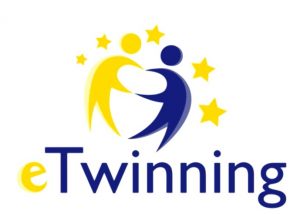Αρχική » Άρθρα με ετικέτα 'students'
Αρχείο ετικέτας students
mBlock
mBlock 5 A powerful platform for coding designed for STEM education mBlock 5, based on Scratch 3.0, is specially designed to support STEM education. By supporting block-based and text-based programming, mBlock 5 allows users to freely create games and animations, and to program Makeblock robots and micro: bit. Moreover, the software features cutting-edge technologies like […]
Scratch EDUCATOR GUIDE
Scratch Guide and lessons for Educators Λήψη αρχείου
Scratch -Getting started
Getting Started with Scratch Scratch is a free visual programming language and online community where anyone can create their own stories, games, and animations. We are so excited to share the many pathways to participate in the Scratch global community! Just Getting Started? The Scratch Ideas page is a great place to begin! This page offers a […]
Education Innovation Space Makeblock Education
The Makeblock Education Innovation Space (MIS) is a school hub facilitating innovative learning. It’s a space where teachers and students can teach and learn, and more importantly, apply 21st century skills. Where the teacher becomes the facilitator and student led enquiry based learning-to-learn can thrive. https://education.makeblock.com/innovation-spaces/
Human robot by Barefoot
Program a Human Robot to move Read more here human_robot_activity6fb9fddbdcfc6c779083ff0100ba3f46
Five Unexpected Benefits of Robotics in the Classroom
By Aaron Maurer As teachers, we’re well aware that STEM education is essential in preparing students for today’s world of non-stop innovation. In my 13 years of teaching I’ve seen many curriculum fads come and go, but the use of robotics in the classroom has proven to be a consistent and surefire way to teach […]
Greece 2nd GEL Kalymnou – Gravity
A project done by students of B class of the 2nd GEL of Kalymnos in the physics course (combining gravity and circular motion)
Barefoot – Safer Internet
Join Dr Chips and Ms Lieghio for a Safer Internet Day live special! They’ll be sharing the freshly revamped ‘Cyber Snakes’ activity for pupils aged 5 – 7 and launching a brand new online game about phishing scams,‘ The Phisherman’, for pupils aged 8 – 11. Join live or watch again at this link […]
The 5 Major Benefits of 3D Printing in Education
The 5 Major Benefits of 3D Printing in Education 5 major benefits of 3D printing’s impact on education Creates Excitement – 3D printing offers students the ability to experience their projects from the model stage to actual creation of the model. This creates both excitement and a better understanding of the design process as they gain […]

